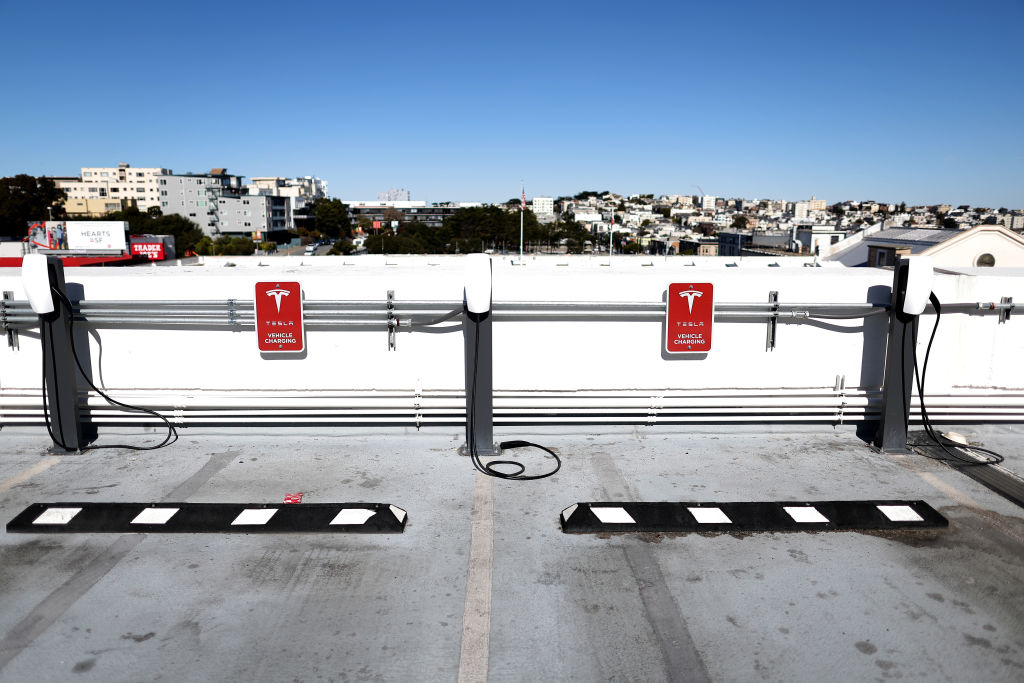
Electric vehicles are becoming increasingly popular in the U.S., but for many Americans, concerns remain about their range. While you can find a gas station almost anywhere in the country, charging stations for EVs are not nearly as ubiquitous.
On Feb. 15, the Biden-Harris Administration announced new plans and guidelines designed to facilitate the decarbonization of the country’s road fleet, in large part by bolstering the EV charging network across the U.S. One of the more newsier elements of the White House statement was that Tesla would, for the first time, open up the use of its charger stations to EVs made by other brands.
On the one hand, that’s a big deal, given that Tesla currently has one of the best charging networks in the country. On the other hand, the addition of Tesla chargers won’t get the U.S. anywhere near the Biden-Harris team’s stated goal to have 500,000 EV chargers available to the American public by 2030.
That underscores the somewhat fractured nature of the U.S. EV-charging industry. Some stations, like those run by ChargePoint (currently the largest provider in the U.S.) and EVGo, are part of independent networks. Others are owned and managed by fossil-fuel companies, like BP and Shell. And still others are the products of car companies—Volkswagen’s Electrify America network, for example, and, of course, Tesla. A major challenge of decarbonizing road travel in the U.S. will be to ensure that this mosaic of charging infrastructure grows continuously over the next few years, despite its splintered nature.
One of the biggest ways the Biden plan seeks to address this is through what the Administration is calling the Charging and Fueling Infrastructure discretionary grant program. The scheme earmarks $2.5 billion of Federal Highway Administration funding to be used over five years by states, localities, Tribes, territories, and public authorities to deploy public charging infrastructure. And, importantly, any federally funded chargers must use technology that makes it easier to actually refill your EV battery. There’s still much to be worked out in order to make the experience of EV charging seamless across the U.S., but this is a significant step in the right direction.
A version of this story also appears in the Climate is Everything newsletter. To sign up, click here.
More Must-Reads from TIME
- Donald Trump Is TIME's 2024 Person of the Year
- Why We Chose Trump as Person of the Year
- Is Intermittent Fasting Good or Bad for You?
- The 100 Must-Read Books of 2024
- The 20 Best Christmas TV Episodes
- Column: If Optimism Feels Ridiculous Now, Try Hope
- The Future of Climate Action Is Trade Policy
- Merle Bombardieri Is Helping People Make the Baby Decision
Contact us at letters@time.com